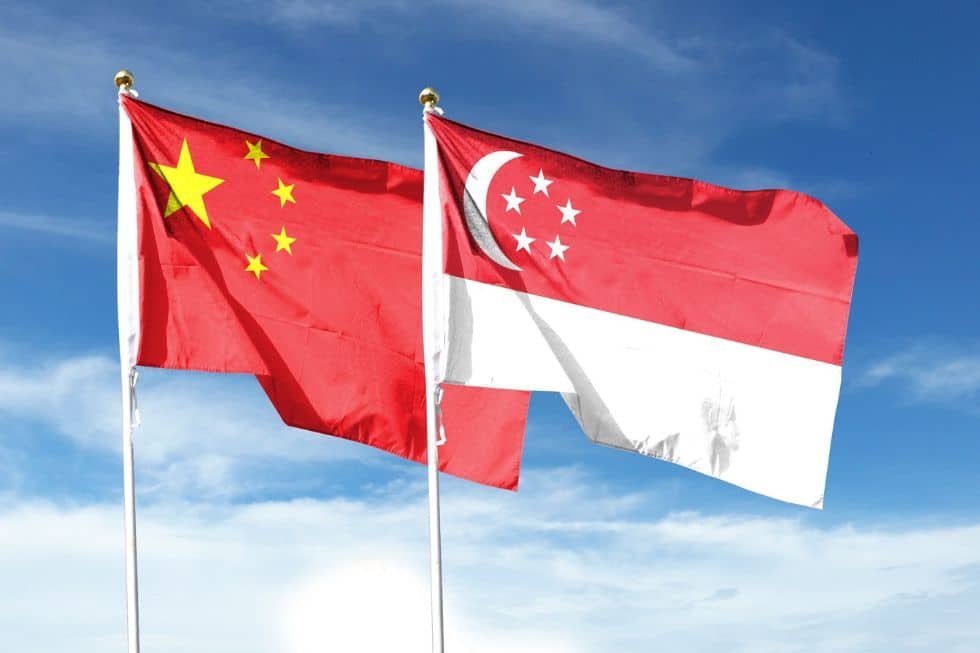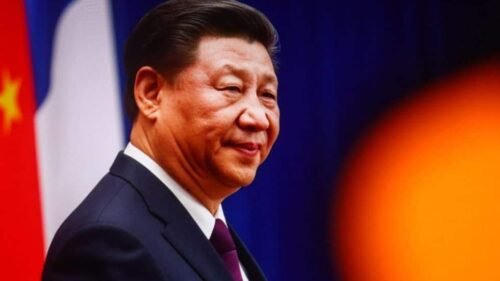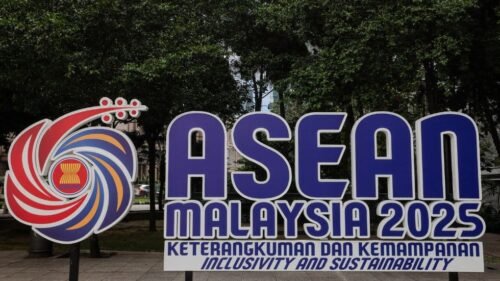Much has been written about China’s current economic hurdles and rigidities. However, the big picture must always be kept in mind. This means remembering that in just a few decades, the country passed from being an “iron rice bowl” economy (a metaphor for the State guaranteeing its citizens a modest but protected life from cradle to grave), to becoming a highly dynamic one.
Indeed, China has rapidly transformed from being a stagnant and backward economy to becoming the second-largest economy in the world, lifting around 700 million people out of poverty in the process.
From an iron rice bowl economy to the anteroom of economic supremacy
Actually, since 2014, China has overtaken the United States’ GDP measured by Purchasing Power Parity (PPP). This year, it reached 19.68% of the global GDP by PPP share versus the US’ 14.75%. Moreover, by 2036, China could surpass the US’ GDP in absolute terms, thus becoming the world’s largest economy.
China’s southern city of Shenzhen exemplifies well the magnitude of the changes brought over in these last few decades: A small city of 20,000 inhabitants in 1979, it is now a booming metropolis with more than 18 million people.
As American economist Joseph Stiglitz wrote in relation to China’s economic path: “A decade of unparalleled American influence over the global economy was also a decade in which one economic crisis seemed to follow another … Meanwhile, China, following its own course, showed there was an alternative path of transition [away from closed economies] which could succeed both in bringing the growth that the market promised and markedly reducing poverty”.
Deng Xiaoping was the father of China’s alternative path. He served as the country’s paramount leader between 1978 and 1989, leading it through a process of economic reform and opening up. This process was not only gradual but also strategically planned to promote specific sectors and activities through selective policies. Paradoxically, this gradualness was accompanied by an incredible velocity.
After retirement, Deng retained substantial shadow powers, temporarily remerging from the penumbra in his iconic 1992 Southern Tour, where he defended and saved economic reforms from their domestic critics.
Lee Kuan Yew: the godfather of China’s economic miracle
What is less well known, however, is that Singapore’s founding father, Lee Kuan Yew, was the godfather of China’s economic reform and opening-up process. Singapore’s own success, indeed, preceded and inspired the Chinese model.
As part of his response to the Vietnamese invasion of Cambodia in 1978, Deng visited Bangkok, Kuala Lumpur and Singapore at the end of that year. His trip to Singapore, however, was a very special one as it turned out to be an eye-opener on what fellow Chinese were able to attain.
Upon Deng’s return to China, he called on his government to learn from the Singaporean experience: “Singapore enjoys good social order and is well managed … We should tap their experience and learn how to make things better than we do.”
Indeed, they drew on the Singaporean experience. Numerous Chinese delegations visited the city-state to learn how things were done there. Moreover, Dr. Goh Keng Swee, Deputy Prime Minister of Singapore, was invited to serve as economic advisor on China’s coastal development.
At the beginning of the 1990s, the China-Singapore Suzhou Industrial Park was established in Suzhou, China. It aimed to develop a modern industrial township that followed Singapore’s management methods and which could serve as a teaching ground for Chinese authorities. The China-Singapore Industrial Park was followed by another one in Wixi in 1995.
According to American sociologist of East Asia Ezra Vogel, a “special relationship” took shape between Deng and Lee, two “straightforward realists” with similar strategic minds, who met on several occasions. Deng became an admirer of Lee’s capacity to grasp long-term trends and deal with practical issues in an extraordinarily successful manner. Following Lee’s example, Deng’s dream became none other than to “plant a thousand Singapores in China”.
What was Singapore’s recipe?
What was Singapore’s recipe that Deng wanted to copy? In Henri Ghesquiere’s terms: “In Singapore, the State and not the private sector, has been the driver of development. The invisible hand that serves the common good through self-interest is guided by the strong visible arm of the government”. In other words, the State not only assumed a direct entrepreneurial role through public enterprises, but acted as the agenda-setter for the private sector.
While being highly open to foreign investments, a meritocratic State directed these investments according to strategic and carefully planned industrial policies. Foreign capital not only served to develop and finance strategically defined objectives, but also to locally provide a know-how spill-over. The State planned sets of quantifiable targets to be reached at future points in time, carefully monitoring its results to ascertain whether public policies were on track or if tactical modifications were needed.
Moreover, a continuous process of reinvention took place amid the periodic renewal of strategic aims. From oil refining to petrochemicals, from ports to financial services, from offshore drilling equipment manufacturing to biotechnology and from research and development (R&D) to high-end services, Singapore’s independent history can be traced through its stages of periodical reinvention. The result was higher-value-added activities, densely clustered in a network of world-class hubs.
Following a long-term perspective and a pragmatic problem-solving attitude, Singapore attained the world’s third-largest GDP per capita on a PPP basis in 2012: $59,711. It is worth adding that in 2024, Singapore attained the number one global position in GDP per capita in PPP terms with $132,570, while its GDP per capita in absolute terms reached $90,674.
Small is beautiful
Singapore’s success bears few comparisons. At the height of globalization, it was argued that small was beautiful, as small countries could enjoy the speed of movement, flexibility of maneuver and incentives to look for outside markets. Not surprisingly, of the world’s ten richest countries in GDP per capita terms in 2003, only two had populations that surpassed 5 million inhabitants: the United States and Switzerland.
Under that logic, it was perfectly understandable that an island country with a land area of approximately 283 square miles, which in 2003 had an estimated population of 4,253,000, could be so successful.
But then, what about China? A country of 1.3 billion inhabitants and a continental size comparable to that of the US, whose GDP was just 9% of America’s at the inception of its reform and opening-up process, did not fit at all under such reasoning.
China, however, was able to demonstrate a speed and flexibility that seemed inconceivable for a country of its size. If size is tantamount to heaviness, how then can we explain China’s lightness of movement?
The answer to an apparent contradiction
The fact is, however, that Deng’s dream to “plant a thousand Singapores” in China’s soil was fully accomplished. Perhaps the answer to this apparent contradiction could be found in a combination of the economic model applied and the cultural traits of the population involved. A model that China copied from Singapore, and a Han population that both countries share.
The economic model in itself is key. Not only was former Chinese leader Mao Zedong’s economic experience chaotic, but China’s economic results during the so-called “Century of Humiliation”, which preceded the emergence of the People’s Republic, were horrific. Since Deng Xiaoping, everything has changed dramatically.
The process that Deng put in motion followed the Singapore model, but on a gigantic scale. It was not only gradual, but strategically planned to successively promote specific regions, industries and activities. A first step in industrial policies was taken in relation to the Town and Villages Enterprises (market-oriented public enterprises managed by local governments in townships and villages in China), which received access to low-interest credits, tax holidays and special allocation in the budget.
In the early 1990s, priority was given to investments in energy, basic materials and related infrastructure. In the mid-1990s, policy was focused on capital-intensive/economy-of-scale “pillar industries”, such as machines, electronics and petrochemicals. In the mid-2000s, software, integrated circuits and autos became the priority. And so on, and so forward.
Within clearly defined strategic goals, the model allowed for a pragmatic tactical room of maneuver, leaving space to correct undesirable effects or react to changing circumstances. It was a process of progressive stages and periodic adjustments, in which transitional policies acted as bridges from one stage to the next.
However, in addition to the nature of the model itself, both China and Singapore share a predominantly Han Chinese population. They represent 92% of the People’s Republic of China’s total population, and 76% of Singapore’s. Hence, both countries share the same prevailing cultural trait: Confucianism.
Referring to it, world-famous futurist Herman Kahn predicted in 1979 that “the Confucian ethic — the creation of dedicated, motivated, responsible, and educated individuals and the enhanced sense of commitment, organizational identity, and loyalty to various institutions — will result in all the neo-Confucian societies having potentially higher growth rates than other cultures”.
In 1980, world-famous Harvard’s China expert Roderick MacFarquhar said: “That ideology [Confucianism] is as important to the rise of the East Asian hyper-growth economies as the conjunction of Protestantism and the rise of capitalism in the West”.
Hence, the nature of the economic model put in motion by Deng Xiaoping following Lee Kuan Yew’s steps, and the country’s Confucian cultural traits, seem to explain China’s extraordinary economic success. Not gratuitously, hence, Niall Ferguson has called China “a giant Singapore”.
[Kaitlyn Diana edited this piece.]
The views expressed in this article/video are the author’s own and do not necessarily reflect Fair Observer’s editorial policy.
Support Fair Observer
We rely on your support for our independence, diversity and quality.
For more than 10 years, Fair Observer has been free, fair and independent. No billionaire owns us, no advertisers control us. We are a reader-supported nonprofit. Unlike many other publications, we keep our content free for readers regardless of where they live or whether they can afford to pay. We have no paywalls and no ads.
In the post-truth era of fake news, echo chambers and filter bubbles, we publish a plurality of perspectives from around the world. Anyone can publish with us, but everyone goes through a rigorous editorial process. So, you get fact-checked, well-reasoned content instead of noise.
We publish 3,000+ voices from 90+ countries. We also conduct education and training programs
on subjects ranging from digital media and journalism to writing and critical thinking. This
doesn’t come cheap. Servers, editors, trainers and web developers cost
money.
Please consider supporting us on a regular basis as a recurring donor or a
sustaining member.
Will you support FO’s journalism?
We rely on your support for our independence, diversity and quality.








Comment
Very interesting and well documented analysis. It appears to me that the model the author quotes actually was developed in Japan after WWII. Traveled to Taiwan. Then Korea, Singapore and China.